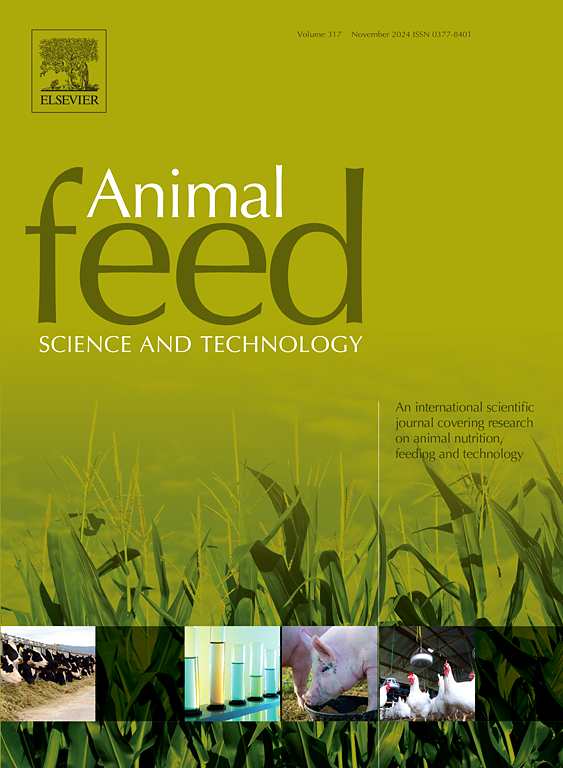Effects of sodium benzoate on the quality and aerobic stability of corn silage contaminated with Listeria monocytogenes
IF 2.5
2区 农林科学
Q1 AGRICULTURE, DAIRY & ANIMAL SCIENCE
引用次数: 0
Abstract
This study was conducted to evaluate the effects of sodium benzoate on the microbial safety and fermentation quality of corn silage contaminated with Listeria monocytogenes. Corn plants were harvested during the milking stage, chopped into 1.5–2.0 cm segments, and ensiled in 1.5-liter containers at ambient temperature for 60 days. The experimental design included four treatment groups, each with four replicates: a control group (Group A), a group inoculated with L. monocytogenes (Group B), a group treated with both L. monocytogenes and sodium benzoate (Group C), and a group treated with sodium benzoate alone (Group D). L. monocytogenes was introduced to Groups B and C at a concentration of 105 cfu/g, while sodium benzoate was added to Groups C and D at a concentration of 0.1 %. Following the 60-day ensiling period, samples were subjected to comprehensive chemical and microbiological analyses, as well as a 5-day aerobic stability test. Sodium benzoate supplementation enhanced the concentration of water-soluble carbohydrates and reduced levels of butyric acid, ethanol, and ammonia nitrogen (P < 0.001). Post-aerobic stability test results indicated that silages in Group D exhibited lower pH, CO2 production, and yeast and mold counts significantly compared to the control group. No L. monocytogenes colony growth was observed in the silages during the microbiological analysis. These findings suggested that sodium benzoate could be a potent additive for improving both the fermentation quality and microbial safety of silages, offering significant benefits in the context of animal nutrition.
求助全文
约1分钟内获得全文
求助全文
来源期刊

Animal Feed Science and Technology
农林科学-奶制品与动物科学
CiteScore
6.00
自引率
6.20%
发文量
266
审稿时长
3 months
期刊介绍:
Animal Feed Science and Technology is a unique journal publishing scientific papers of international interest focusing on animal feeds and their feeding.
Papers describing research on feed for ruminants and non-ruminants, including poultry, horses, companion animals and aquatic animals, are welcome.
The journal covers the following areas:
Nutritive value of feeds (e.g., assessment, improvement)
Methods of conserving and processing feeds that affect their nutritional value
Agronomic and climatic factors influencing the nutritive value of feeds
Utilization of feeds and the improvement of such
Metabolic, production, reproduction and health responses, as well as potential environmental impacts, of diet inputs and feed technologies (e.g., feeds, feed additives, feed components, mycotoxins)
Mathematical models relating directly to animal-feed interactions
Analytical and experimental methods for feed evaluation
Environmental impacts of feed technologies in animal production.
 求助内容:
求助内容: 应助结果提醒方式:
应助结果提醒方式:


